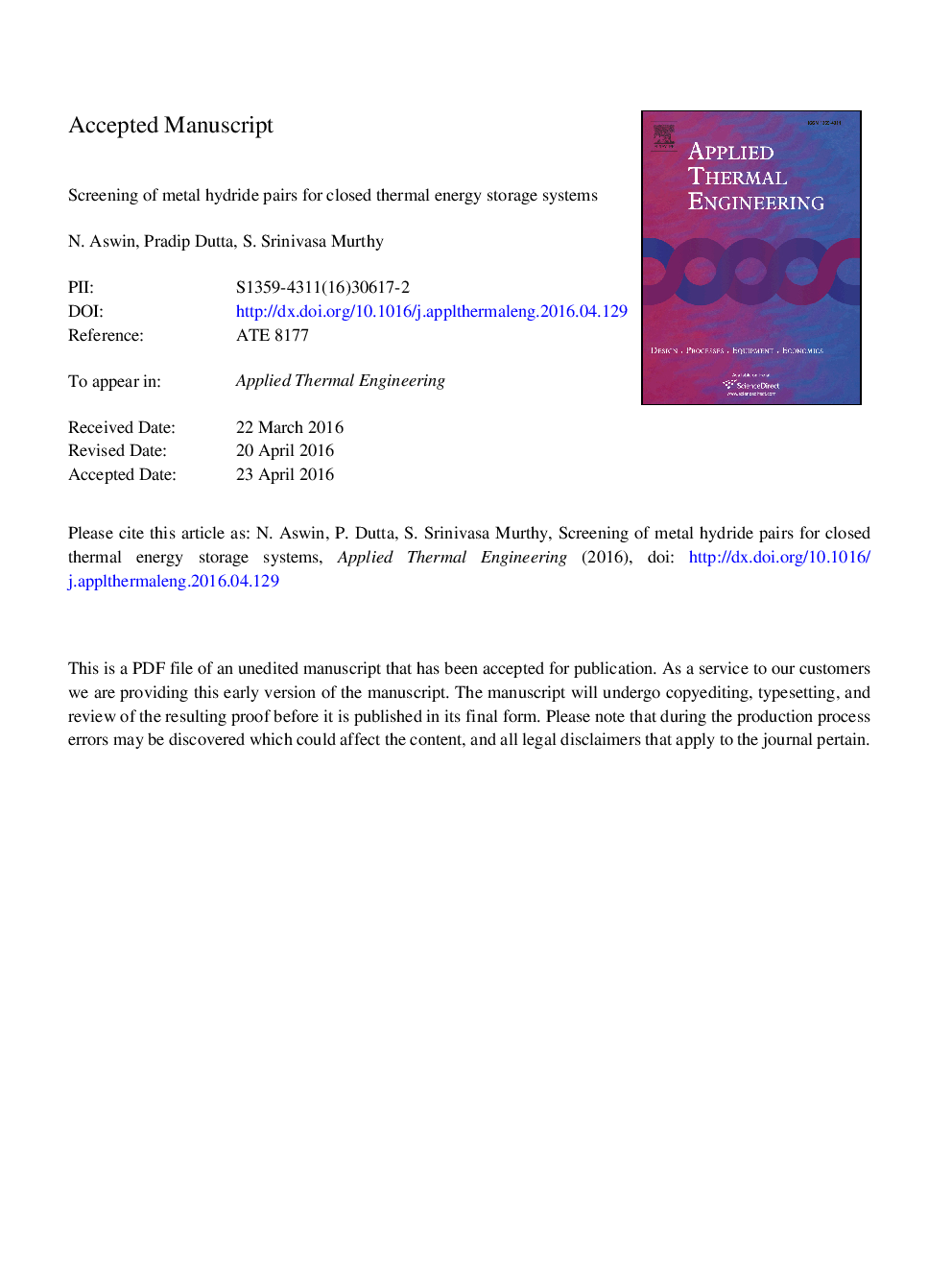| Article ID | Journal | Published Year | Pages | File Type |
|---|---|---|---|---|
| 4992213 | Applied Thermal Engineering | 2016 | 36 Pages |
Abstract
Thermal energy storage systems based on metal/hydrides usually are closed systems composed of two beds of metal/alloy - one meant for energy storage and the other for hydrogen storage. It can be shown that a feasible operating cycle for such a system using a pair of metals/alloys operating between specified temperature values can be ensured if the equilibrium hydrogen intake characteristics satisfy certain criteria. In addition, application of first law of thermodynamics to an idealized operating cycle can provide the upper bounds of selected performance indices, namely volumetric energy storage density, energy storage efficiency and peak discharge temperature. This is demonstrated for a representative system composed of LaNi4.7Al0.3-LaNi5 operating between 353 K and 303 K which gave values of about 56 kW h mâ3 for volumetric storage density, about 85% for energy storage efficiency and 343 K for peak discharge temperature. A system level heat and mass transfer study considering the reaction kinetics, hydrogen flow between the beds and heat exchanger models is presented which gave second level estimates of about 40 kW h mâ3 for volumetric energy storage density, 73% for energy storage efficiency and 334 K for peak temperature for the representative system. The results from such studies lead to identifying metal/alloy pairs which can be shortlisted for detailed studies.
Related Topics
Physical Sciences and Engineering
Chemical Engineering
Fluid Flow and Transfer Processes
Authors
Aswin N., Pradip Dutta, S. Srinivasa Murthy,
